Meta Description:
Learn how decluttering your space can lead to better mental clarity, reduced stress, and a more peaceful environment. Backed by science and real-life city initiatives, this guide offers practical tips to transform your home and mind.
Tags: Decluttering, Mental Health, Calm Environment, Stress Relief, Minimalism, Mindful Living
Outline
- Introduction
- The Psychology Behind Clutter and Mental Stress
- Benefits of a Calm and Decluttered Environment
- Real-Time Data: What the Research Says
- City Case Study: San Francisco’s Mindful Living Movement
- How to Start Decluttering (Without Feeling Overwhelmed)
- Decluttering by Room: Practical Tips
- Minimalism vs. Functional Living
- Sustainable Decluttering: Donate, Recycle, Reuse
- Conclusion
- FAQ Section
Introduction
In today’s overstimulated world, physical clutter often mirrors mental chaos. The connection between one’s environment and mental clarity is more than aesthetic—it’s deeply psychological. As people seek serenity in their homes, decluttering has become a proven way to reduce stress and improve cognitive function.
According to a 2023 study from the National Institute of Mental Health, individuals living in cluttered homes are 48% more likely to report daily stress and anxiety symptoms. This blog explores the mental and emotional benefits of creating a calm space through decluttering, using real-time insights, city initiatives, and expert advice.
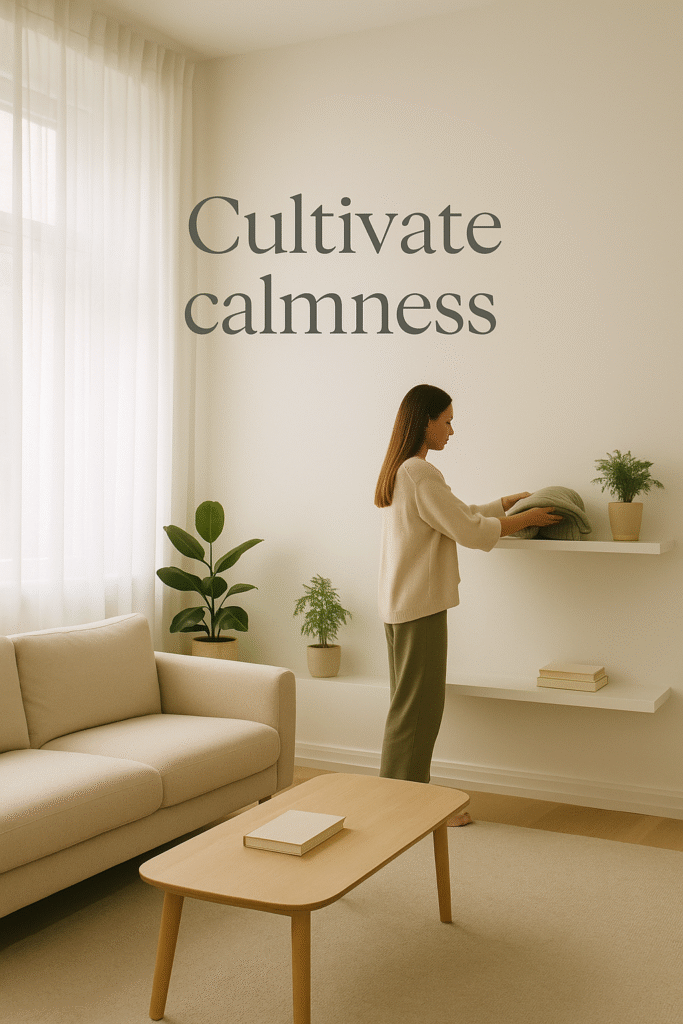
The Psychology Behind Clutter and Mental Stress
Clutter overloads the brain with unnecessary stimuli. This constant visual reminder of disorganization drains mental energy and can lead to decision fatigue. According to Dr. Sherrie Bourg Carter, psychologist and author of High-Octane Women, “Clutter bombards our minds with excessive stimuli, making it difficult to focus.”
In essence, a chaotic environment can make even simple tasks feel overwhelming.
Benefits of a Calm and Decluttered Environment
Creating a cleaner space led to several psychological and physical benefits:
- Increased focus and productivity
- Reduced anxiety and depression
- Better sleep quality
- Enhanced creativity
- Improved self-esteem and sense of control
A University of Connecticut study found that students in decluttered dorm rooms reported a 23% increase in study effectiveness and calmness.
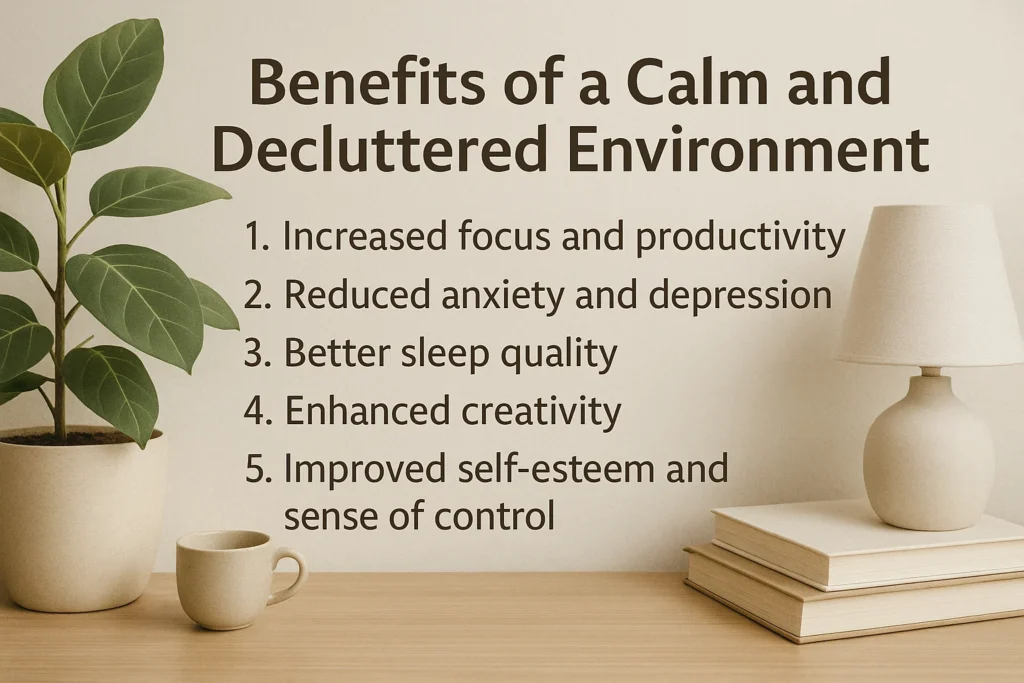
Real-Time Data: What the Research Says
Recent reports and surveys continue to support the benefits of decluttering:
Stanford University (2024): Cognitive function improved by 33% in subjects after decluttering their workspaces.
The Container Store’s 2023 Declutter Survey: 76% of respondents said a tidy home reduced their stress levels.
New York Times Poll (2023): Over 60% of respondents from New York, Chicago, and Seattle associate a clutter-free home with mental well-being.
These numbers suggest a growing awareness of the importance of physical space in emotional health.
City Case Study: San Francisco’s Mindful Living Movement
In 2023, San Francisco launched a city-wide “Mindful Living Initiative,” offering free workshops on sustainable decluttering and mental wellness. In partnership with local therapists and waste management groups, the city provided:
- Guided decluttering sessions in public libraries
- Mindfulness training tied to environmental simplicity
- Donation drives in collaboration with Goodwill
Post-program feedback showed that 84% of participants experienced improved focus and reduced stress at home.
How to Start Decluttering (Without Feeling Overwhelmed)
Starting the decluttering process can feel daunting. Use these beginner tips to ease in:
Set a Timer: Try 15-minute sessions to avoid burnout.
Start Small: Begin with a drawer or shelf instead of an entire room.
The One-Year Rule: If it hasn’t been used in the last year, consider letting it go.
Sort by Categories: Follow the KonMari method—clothes, books, papers, misc, sentimental.
Remember: progress, not perfection.
Decluttering by Room: Practical Tips
Living Room
- Remove excess furniture.
- Hide cords with organizers.
- Keep only one or two decorative items per surface.

Kitchen
- Purge expired items.
- Store utensils vertically for space.
- Use clear containers to avoid duplicates.
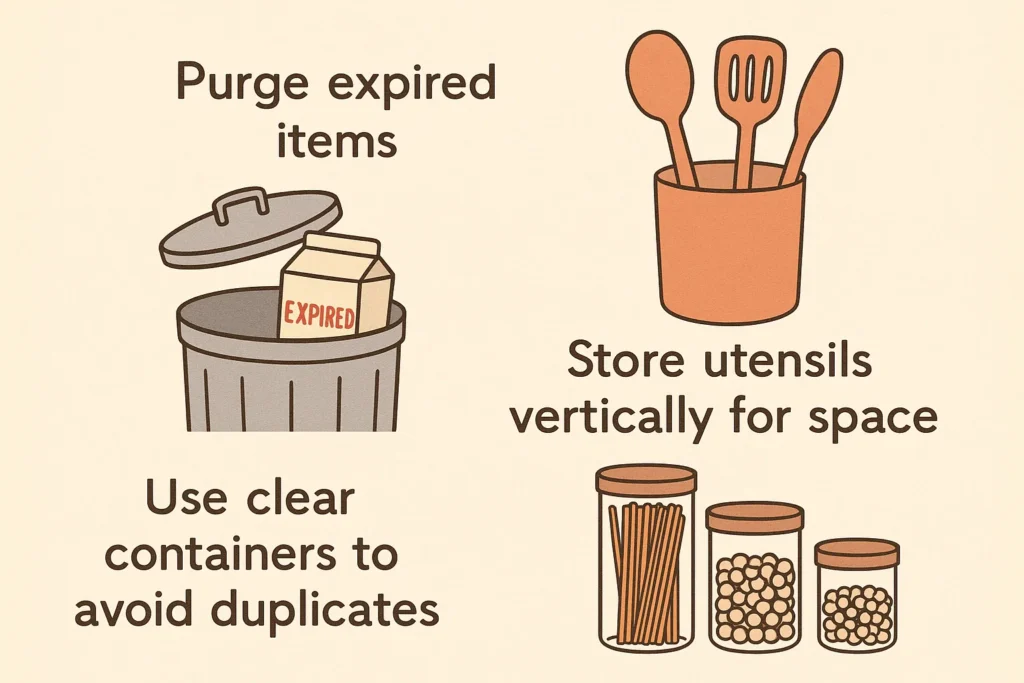
Bedroom
- Limit nightstand clutter.
- Store out-of-season clothes under the bed.
- Use calming colors and blackout curtains.
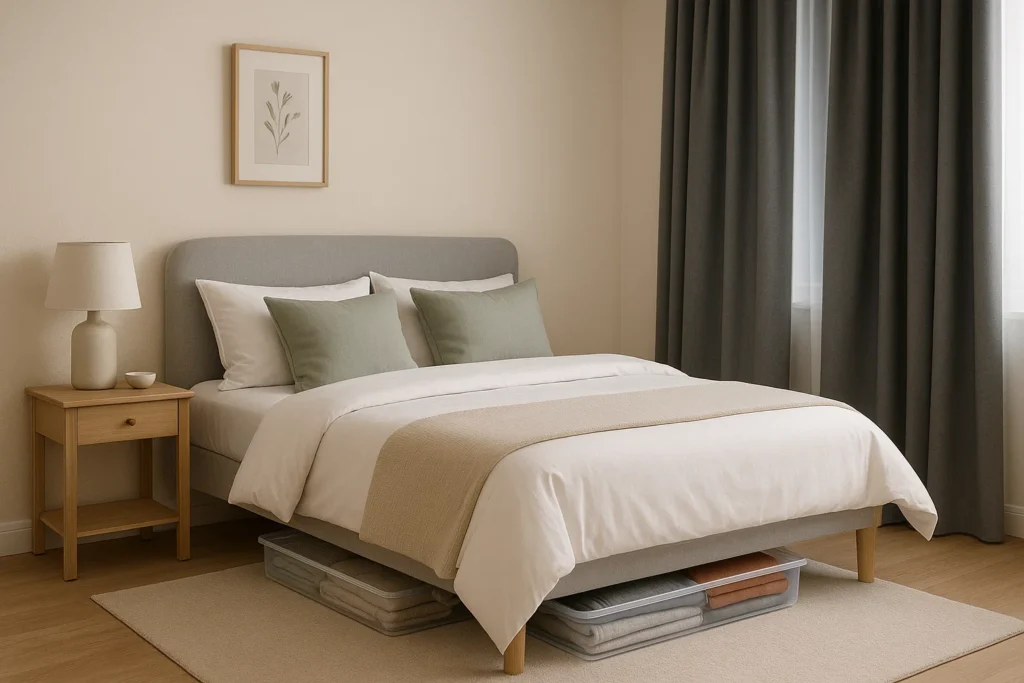
Bathroom
- Keep countertops minimal.
- Use drawer dividers.
- Dispose of unused or expired products.
Minimalism vs. Functional Living
While minimalism promotes owning fewer things, functional living focuses on keeping what adds value. The goal isn’t empty space—it’s intentionality.
- Minimalism: Prioritizes aesthetics and simplicity.
- Functional Living: Retains useful items for efficiency and comfort.
Choose what aligns with your personality and lifestyle.
Sustainable Decluttering: Donate, Recycle, Reuse
Decluttering doesn’t mean sending everything to landfills. Cities across the U.S. offer eco-friendly solutions:
- New York: Local recycling stations accept old electronics and clothing.
- Portland: Zero-waste swaps and furniture donation drives.
- Austin: Community repurpose centers that upcycle old goods.
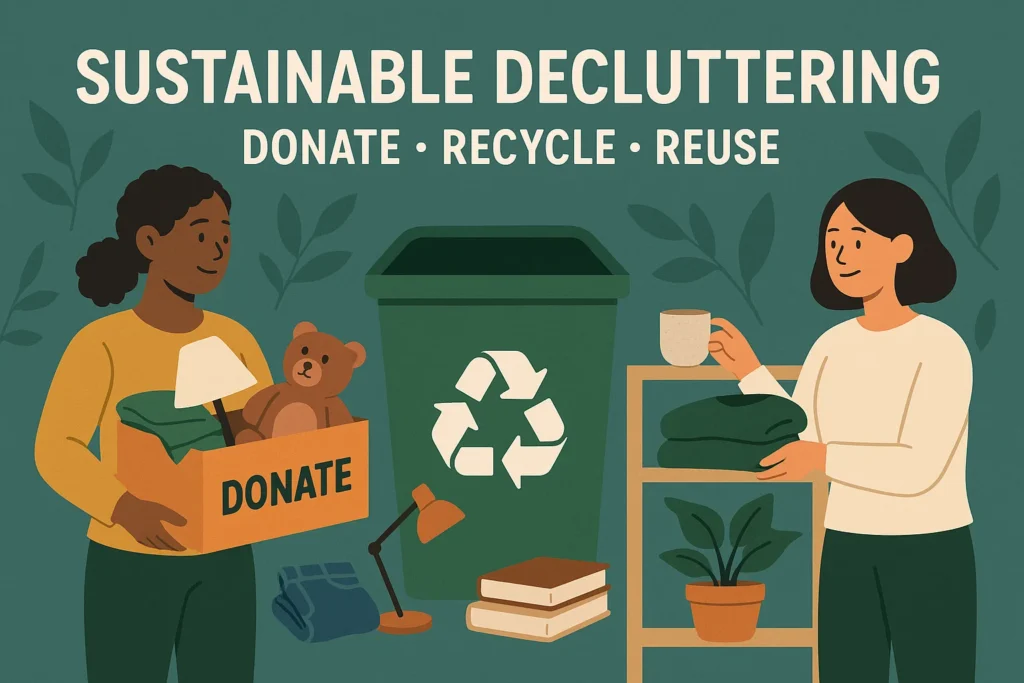
Tips for sustainability:
- Use apps like Freecycle or Buy Nothing.
- Donate gently used items to shelters.
- Repurpose old items into DIY projects.
Conclusion
Decluttering is more than a trend—it’s a lifestyle shift that clears the mind and soothes the soul. Whether you’re reorganizing a closet or overhauling your entire home, each step toward order brings clarity and peace. Cities like San Francisco prove that calm, clean spaces lead to healthier minds and happier communities. In a world full of noise and excess, simplicity can be your sanctuary.
FAQ Section
Q1: Can decluttering really reduce anxiety?
A: Yes. Clutter creates sensory overload, which contributes to anxiety. A tidy space helps the brain process tasks with less stress.
Q2: How often should I declutter my home?
A: A light decluttering every 3 months is ideal. Seasonal reviews help keep clutter in check.
Q3: What if I feel emotionally attached to items?
A: Start with non-sentimental items. For emotional ones, ask yourself: “Does this bring me peace or guilt?”
Q4: Is it better to declutter room by room or by category?
A: Both work. Room-by-room is practical; category-based decluttering (like the KonMari method) creates deeper awareness.
Q5: Are there any tools that help with decluttering?
A: Yes! Apps like Tody (cleaning schedules), Clutter free (habit tracking), and Sortly (inventory management) can help streamline the process.
